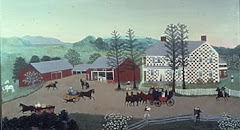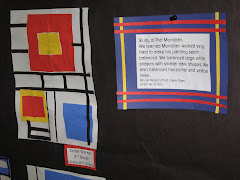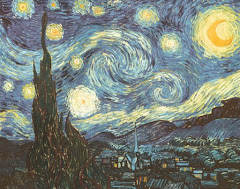
For this analysis I chose Monet's Garden from Jessie Manzer’s Blog.
The orthogonal lines of this particular art converge at a vanishing point outside of the piece because from the artist's viewpoint the garden is seen from the lower left angle. The evenly planted rows of iris take the eye from bottom left to upper right towards the pond or lake. It is almost as if the iris are planted all the way up to the body of water surrounded by perpendicular trees and greenery.
The natural light shining onto the garden tells us that the sun could be either rising or setting at this time of day. Monet worked in the plein-aire style so as to view and paint colors as they appeared at the time of painting.The scale of the iris are larger in the lower half (front) of the picture and become smaller with details of plant construction almost disappearing. This demonstrates how mature the garden is. It is not a new planting as the iris are tightly compacted together.
There is a hint of a horizon in the upper quarter of the picture where the water meets the greenery. The horizon is then overlapped by a bend of the water line with it's own greenery. This provides a sense of spatial depth or space to the painting.
Natural light also defines these colors as well. By adding white to the flowers' color (hue) Monet tints varying hues indicating to us that the sun in shining. To create darker shades he adds pigments of black to indicate shadows where the sun is not. These flowers contain the cool colors on the color wheel as they fall within the "green through violet area" (p.133, text)
Due to the sweeping brush strokes (expressive line) this created a kind of textured look which was not at all like the smooth paint strokes of other traditional artists. Although a true textured look with paint is defined as layer upon layer; Monet's sweeping, expressive style has that kind of appearance. There is barely any indication of motion so the painting gives the viewer a calm and relaxed feeling which is why I have a preference for these types of paintings.























